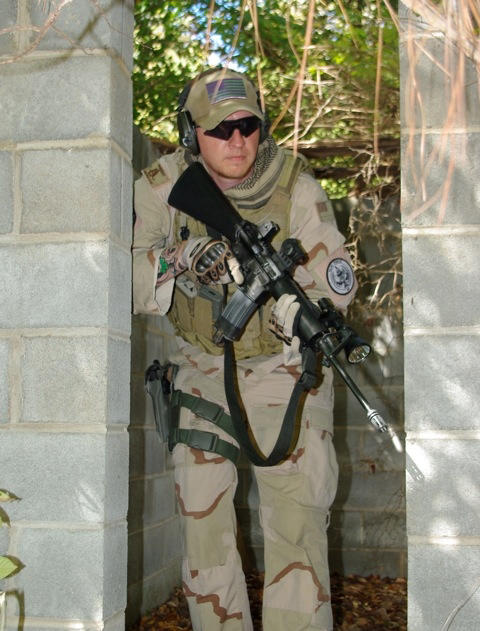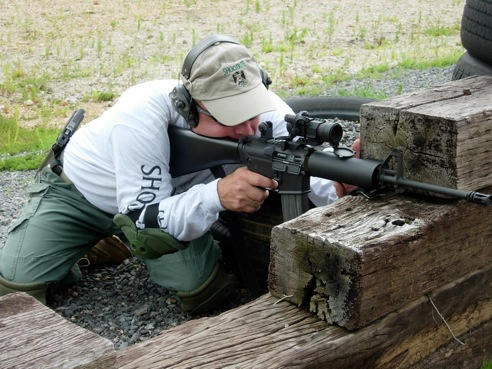In most confrontations your response needs to include movement. Lateral movement - a quick step left or right –– forces the threat to start reacting to you. You move to the rear, to creating distance, or change directions to get to cover. After the initial lateral movement you need to keep moving. The key is quickly determining where to move next. Movement is important, but moving without a clear idea of where to go, and why, is wasted time.

A quick step to the side, lateral movement, forces the threat to react to you. This movement resets the threat’s OODA Loop. The threat is trying to hit, cut or shoot you – you’re moving off the “X.” This movement buys you a little bit of time to determine what you need to do next and where you should be moving.
Your initial action – lateral movement - is immediately followed up by more action. The goal is to keep forcing the threat to reset his Loop, never letting him get to the “Act” phase. After the lateral step you’re moving to create distance; the more distance the less your chances of being hit, cut or shot.
If there are bystanders or family between you and the threat, you move to obtain a clear angle of fire, the ability to engage without risk of injuring others. You move to escape; the goal in most defensive situations is to break contact as soon as possible. You’re moving to cover and the protection it provides. The decision on what direction to move must be made quickly.
Observing the people around you lets you spot a potential problem before it turns into trouble. You see something you don’t like, and move to avoid and escape. While watching people you’re also noting escape routes, areas you could easily defend and objects that provide protection – cover. Should something happen your response time is quicker because you already have a good idea of where you need to go.

At the same time you’re determining what fighting position you may need for that location. Whenever possible stay upright, remaining standing so you have mobility. However, the cover may require a kneeling position. You get lower to get behind the cover. Knowing what position is needed before arriving at that location makes you more efficient, plus it’s one less thing you have to think about while moving.
You can move fast, in natural running mode. Or, you move tactically. Tactical movement is a slower shuffle type movement that maintains a fighting stance; everything from the hips and up is “ready.” You’re moving in a low ready position. The pistol is extended in front, muzzle down, indexed on the direction of movement or where you think the danger may come from. With a long gun muzzle is down and the stock in the shoulder. Should a threat appear you’re ready to engage immediately, without delay, and this technique allow you to change directions as needed.
In a sudden, violent confrontation time is a precious commodity. Decisions must be made immediately – remember, problem solving at high speed. The more decisions you can make in advance - like what direction to move and which position you’ll need - the more efficient your response.
Tiger McKee is director of Shootrite Firearms Academy, located in northern Alabama. He is the author of The Book of Two Guns, AR-15 Skills and Drills, featured on GunTalk’s DVD, “Fighting With The 1911 and has regular columns in Gun Digest and American Handgunner.
http://www.facebook.com/pages/Shootrite-Firearms-Academy/156608611038230?ref=ts